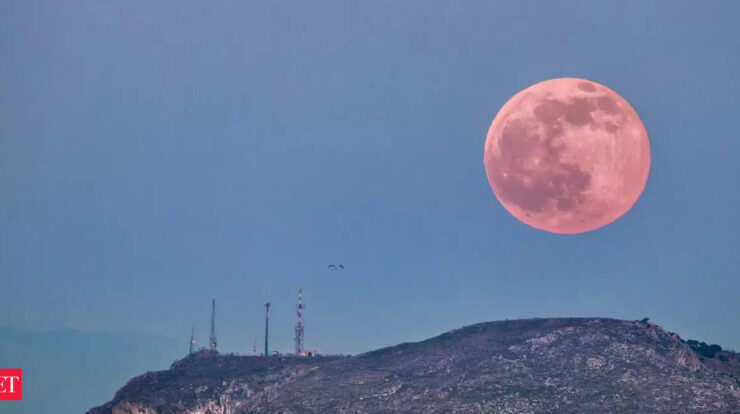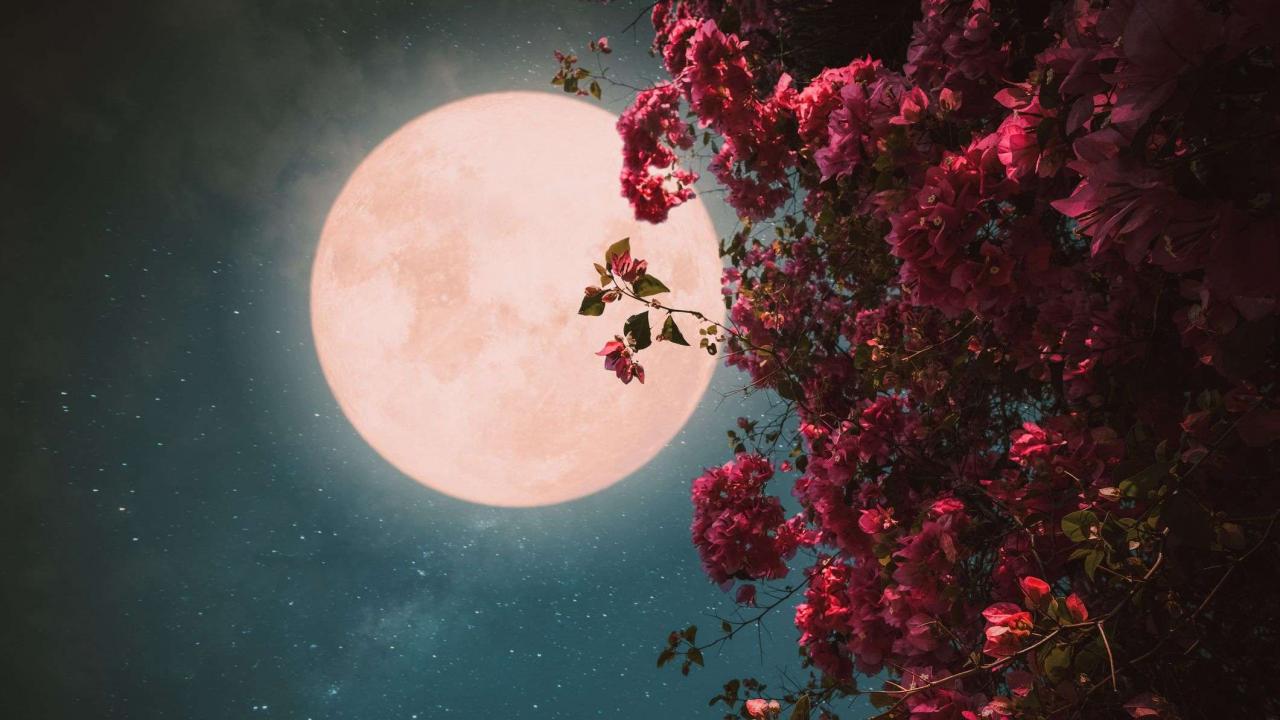
The Pink Moon 2024 is an astronomical event that will captivate stargazers and nature enthusiasts alike. This full moon, occurring in April, holds cultural significance and offers a unique opportunity for celestial observation and creative expression.
With its soft, rosy hue, the Pink Moon has inspired countless tales, traditions, and artistic masterpieces. As it graces the night sky in 2024, we delve into its astronomical significance, cultural history, and practical tips for capturing its beauty.
Pink Moon Overview
The Pink Moon, also known as the Full Moon in April, is the fourth full moon of the year. It derives its name from the blooming of wildflowers, particularly the wild ground phlox, which adorn the meadows and woodlands with a delicate pink hue during this time of the year.
Astronomically, the Pink Moon holds significance as it marks the transition from the winter season to spring in the Northern Hemisphere. It symbolizes the renewal and rebirth associated with the arrival of warmer weather and longer days.
Cultural and Historical Significance
Origins of the Name “Pink Moon”, Pink moon 2024
The name “Pink Moon” is believed to have originated from Native American tribes in North America. They observed the emergence of pink wildflowers, such as the wild ground phlox, during the full moon in April. These flowers would paint the meadows and woodlands with a soft pink color, inspiring the name.
Cultural Traditions and Beliefs
The Pink Moon has been associated with various cultural traditions and beliefs throughout history. In some cultures, it is believed to bring good luck and prosperity, while in others, it is seen as a time for reflection and renewal.
For example, in ancient Celtic traditions, the Pink Moon was known as the “Hare Moon,” symbolizing fertility and abundance. In Chinese culture, the Pink Moon is associated with the element of wood and represents growth and new beginnings.
Celestial Events

Date and Time of the Pink Moon in 2024
The Pink Moon in 2024 will occur on Tuesday, April 9th, at 2:56 AM EDT (06:56 UTC).
Visibility and Celestial Occurrences
The Pink Moon will be visible to observers around the world, weather permitting. It will rise in the east and set in the west, following the typical trajectory of the moon. During this time, the moon will be at its fullest phase, appearing as a complete circle in the night sky.
Additionally, the Pink Moon in 2024 will coincide with the peak of the Lyrid meteor shower. This annual meteor shower is known for its bright and numerous meteors, which can be observed streaking across the night sky.
Observing and Enjoying the Pink Moon
To observe and enjoy the Pink Moon, find a location with clear skies and minimal light pollution. Use binoculars or a telescope to enhance your viewing experience and capture the intricate details of the moon’s surface.
Photography and Visual Arts
Tips for Capturing Stunning Pink Moon Photographs
- Use a tripod to stabilize your camera and prevent blurry images.
- Adjust your camera settings to capture the moon’s brightness and detail. Use a low ISO, a wide aperture, and a slow shutter speed.
- Experiment with different filters, such as a polarizing filter, to enhance the colors and contrast of the moon.
- Compose your shot carefully, considering the moon’s position in the sky and any surrounding elements that may add interest to your image.
Examples of Captivating Pink Moon Images and Artworks
Pink Moon photography and artworks showcase the beauty and wonder of this celestial event. From stunning close-ups of the moon’s craters to ethereal landscapes bathed in its soft glow, these images and artworks capture the essence of the Pink Moon.
Symbolism and Metaphors

Symbolic Meanings and Metaphors
The Pink Moon has been imbued with various symbolic meanings and metaphors throughout history and across cultures. It is often associated with:
- New beginnings and rebirth
- Growth and renewal
- Fertility and abundance
- Emotional sensitivity and intuition
- Reflection and introspection
Use in Literature, Poetry, and Other Art Forms
The Pink Moon has served as inspiration for numerous works of literature, poetry, and other art forms. Its symbolism and ethereal beauty have captivated artists and writers for centuries.
For example, in the poem “Pink Moon” by Emily Dickinson, the moon is described as a “phantom moon” that “comes and goes” and evokes a sense of mystery and wonder.
Comparative Analysis
Comparison to Other Full Moons
While all full moons share certain characteristics, the Pink Moon holds a unique place among them due to its timing and cultural significance. Here is a comparison to other full moons throughout the year:
| Full Moon | Month | Unique Characteristics |
|---|---|---|
| Wolf Moon | January | Marks the beginning of the lunar year and is associated with wolves howling at the moon. |
| Snow Moon | February | Occurs during the coldest time of the year in the Northern Hemisphere, often accompanied by heavy snowfall. |
| Worm Moon | March | Signals the arrival of spring and the emergence of earthworms from the ground. |
| Pink Moon | April | Named after the blooming of wildflowers, particularly the wild ground phlox, and symbolizes new beginnings and growth. |
| Flower Moon | May | Coincides with the peak of spring bloom and is associated with fertility and abundance. |
Last Recap: Pink Moon 2024
The Pink Moon 2024 promises to be a mesmerizing celestial event. Whether you’re a seasoned astronomer or a curious observer, take this opportunity to witness the wonders of the night sky and embrace the cultural and symbolic significance of this extraordinary full moon.
Expert Answers
When will the Pink Moon 2024 occur?
The Pink Moon 2024 will reach its peak illumination on April 11th, 2024, at 11:34 PM EDT.
Why is it called the Pink Moon?
Despite its name, the Pink Moon does not actually appear pink. It is named after the blooming of pink wildflowers in North America during this time of year.
How can I observe the Pink Moon?
The Pink Moon will be visible to the naked eye from anywhere with clear skies. Find an open area with minimal light pollution for optimal viewing.